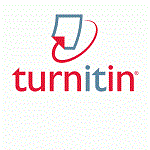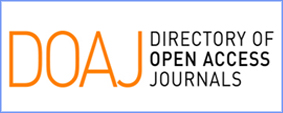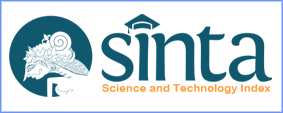Kemampuan Bertanya Siswa dalam Kegiatan Diskusi Kelompok pada Materi Rasio Trigonometri
Abstract
Small group discussions (group work) are an important part of the learning process though students are rarely skilled at asking a question. The purpose of this study is to examine student interactions and questioning skills during group work. This research study uses a qualitative descriptive approach. The research subjects consist of eight students who were divided heterogeneously into two groups, with four members for each group. The research instrument consists of the researcher herself, a task in the form of a trigonometric ratio group worksheet, and three video cameras to observe discussion activities. One camera was focused on all class activities and two cameras were pointing at each group being observed. All conversation transcripts during the discussion are deciphered, coded, and then analyzed qualitatively. The results of this study show the interaction of conveying opinion/rebuttals, asking questions, and providing answers, with the percentage of giving opinions/ objections were more dominant than other interactions. The ability to ask questions was obtained by 50% of the students having the medium questioning ability and 50% having the low questioning ability, with the level of questions asked at the LOTS level, namely C1 and C3 levels. None of the students had high questioning skills. Of the two groups observed, group A was more active in interacting both in terms of exchanging opinions/rebuttals, asking questions, and providing answers. Suggestions for further research need to be carried out an in-depth analysis of discussion activities both in terms of asking questions or providing feedback to see the emergence of collaborative reasoning.
Keywords
Full Text:
PDFReferences
Aminudin, M., Nusantara, T., Parta, I. N., Rahardjo, S., As’Ari, A. R., & Subanji. (2019). Engaging problems on trigonometry: Why were student hard to think critically? Journal of Physics: Conference Series, 1188(1). https://doi.org/10.1088/1742-6596/1188/1/012038
Baron, B. (2000). Participatory Simulations : Building Collaborative Understanding Through Immersive Dynamic Modeling Participatory Simulations : Building Collaborative Understanding Through Immersive Dynamic Modeling. Journal of the Learning Sciences, 8406(December), 471–500. https://doi.org/10.1207/S15327809JLS0904
Barron, B. (2003). Journal of the Learning When Smart Groups Fail When Smart Groups Fail. The Journal of the Learning Sciences, 12(November 2011), 307–359. https://doi.org/10.1207/S15327809JLS1203
Creswell, J. (2012). Educational Research: Planning, Conducting, and Evaluating Quantitative and Qualitative Research.
Cuccio-schirripa, S., & Steiner, H. E. (2000). Enhancement and Analysis of Science Question Level for Middle School Students. 37(2), 210–224.
DeJarnette, A. F., & González, G. (2015). Positioning during group work on a novel task in Algebra II. Journal for Research in Mathematics Education, 46(4), 378–422.
Esmonde, I. (2009). Ideas and identities: Supporting equity in cooperative mathematics learning. In Review of Educational Research (Vol. 79, Issue 2). https://doi.org/10.3102/0034654309332562
Esmonde, I. (2013). Mathematics learning in groups: Analyzing equity in two cooperative activity structures. Journal of the Learning Sciences, 18(2), 247–284. https://doi.org/10.1080/10508400902797958
Francisco, J. M. (2012). Learning in collaborative settings: Students building on each other’s ideas to promote their mathematical understanding. Educational Studies in Mathematics, 82(3), 417–438. https://doi.org/10.1007/s10649-012-9437-3
González, G., & DeJarnette, A. F. (2015). Teachers’ and Students’ Negotiation Moves When Teachers Scaffold Group Work. Cognition and Instruction, 33(1), 1–45. https://doi.org/10.1080/07370008.2014.987058
Huang, X., Lederman, N. G., & Cai, C. (2017). Improving Chinese Junior High School Students ’ Ability to Ask Critical Questions. 1–25. https://doi.org/10.1002/tea.21390
Kane, S. N., Mishra, A., & Dutta, A. K. (2016). Developing Instructional Design to Improve Mathematical Higher Order Thinking Skills of Students. Journal of Physics: Conference Series, 755(1). https://doi.org/10.1088/1742-6596/755/1/011001
Kemendikbud. (2016a). Kementerian pendidikan dan kebudayaan IPTEKS.
Kemendikbud. (2016b). Kementerian pendidikan dan kebudayaan IPTEKS.
King, A. (1994). Guiding Knowledge Construction in the Classroom: Effects of Teaching Children How to Question and How to Explain. American Educational Research Journal, 31(2), 338–368. https://doi.org/10.3102/00028312031002338
Kulgemeyer, C., & Riese, J. (2018). From professional knowledge to professional performance: The impact of CK and PCK on teaching quality in explaining situations. Journal of Research in Science Teaching, 55(10), 1393–1418. https://doi.org/10.1002/tea.21457
Maharani, I. P., & Subanji, S. (2018). Scaffolding Based on Cognitive Conflict in Correcting the Students’ Algebra Errors. International Electronic Journal of Mathematics Education, 13(2), 67–74. https://doi.org/10.12973/iejme/2697
Maharani, R., Marsigit, M., & Wijaya, A. (2020). Collaborative learning with scientific approach and multiple intelligence: Its impact toward math learning achievement. Journal of Educational Research, 113(4), 303–316. https://doi.org/10.1080/00220671.2020.1806196
Nurudini, N., Susiswo, & Sisworo. (2019). Koneksi Matematis Siswa dalam Menyelesaikan Masalah Tidak Lengkap dalam Diskusi Kelompok. Jurnal Pendidikan: Teori, Penelitian, Dan Pengembangan, 4 Nomor: 1(2000), 1323–1332.
O.Nyumba, T., Wilson, K., Derrick, C. J., & Mukherjee, N. (2018). The use of focus group discussion methodology: Insights from two decades of application in conservation. Methods in Ecology and Evolution, 9(1), 20–32. https://doi.org/10.1111/2041-210X.12860
Omari, H. A. (2018). Analysis of the Types of Classroom Questions Which Jordanian English Language Teachers Ask. 12(4). https://doi.org/10.5539/mas.v12n4p1
Perry, M., VanderStoep, S. W., & Yu, S. L. (1993). Asking Questions in First-Grade Mathematics Classes: Potential Influences on Mathematical Thought. Journal of Educational Psychology, 85(1), 31–40. https://doi.org/10.1037/0022-0663.85.1.31
Pratiwi, E., Nusantara, T., Susiswo, S., Muksar, M., & Subanji, S. (2019). Characteristics of students’ cognitive conflict in solving a problem based on information processing theory. International Journal of Learning, Teaching and Educational Research, 18(2), 76–88. https://doi.org/10.26803/ijlter.18.2.6
Ramadhan, F., Mahanal, S., & Zubaidah, S. (2017). Kemampuan Bertanya Siswa Kelas X SMA Swasta Kota Batu pada Pelajaran Biologi. Jurnal Pendidikan Biologi Universitas Muhammadiyah Metro, Vol 8, No, 11–15.
Säre, E., Tulviste, T., & Luik, P. (2017). The function of questions in developing a preschooler ’ s verbal reasoning skills during philosophical group discussions. 4430(July). https://doi.org/10.1080/03004430.2017.1331221
Subanji. (2015). Peningkatan Pedagogical Content Knowledge Guru Matematika dan Praktiknya dalam Pembelajaran Melalui Model Pelatihan TEQIP. Jurnal Ilmu Pendidikan, 71–79.
Susilawati, W., Suryadi, D., & Dahlan, J. (2017). The Improvement of Mathematical Spatial Visualization Ability of Student through Cognitive Conflict. Mathematics Education, 12(2), 155–166.
Tholander, M., & Aronsson, K. (2014). Doing subteaching in school group work: Positionings, resistance and participation frameworks. Language and Education, 17(3), 208–234. https://doi.org/10.1080/09500780308666849
Ulleberg, I., & Solem, I. H. (2018). Which questions should be asked in classroom talk in mathematics ? Presentation and discussion of a questioning model Hvilke spørsmål bør stilles i klassesamtaler i matematikk ? Presentasjon og diskusjon av en spørsmålsmodell. 12(1), 1–21. https://doi.org/http://dx.doi.org/10.5617/adno.5607
Vandenbroucke, L., Spilt, J., Verschueren, K., Piccinin, C., & Baeyens, D. (2018). The classroom as a developmental context for cognitive development: A meta-analysis on the importance of teacher–student interactions for children’s executive functions. Review of Educational Research, 88(1), 125–164. https://doi.org/10.3102/0034654317743200
Walshaw, M., & Anthony, G. (2008). The teacher’s role in classroom discourse: A review of recent research into mathematics classrooms. Review of Educational Research, 78(3), 516–551. https://doi.org/10.3102/0034654308320292
Watson, J. M., & Chick, H. L. (2014). Factors Influencing the Outcomes of Collaborative Mathematical Problem Solving: An Introduction. Mathematical Thinking and Learning, 3(2–3), 125–173. https://doi.org/10.1080/10986065.2001.9679971
Webb, N. M. (2016). Task-Related Verbal Interaction and Mathematics Learning in Small Groups. Journal for Research in Mathematics Education, 22(5), 366. https://doi.org/10.2307/749186
Wood, M. B. (2014). Mathematical micro-identities: Moment-to-moment positioning and learning in a fourth-grade classroom. Journal for Research in Mathematics Education, 44(5), 775–808. https://doi.org/10.5951/jresematheduc.44.5.0775
Zetriuslita, Wahyudin, & Jarnawati. (2018). Mathematical Comunication ability and Curiosity Attitude Through Problem Based Learning and Cognitive Conflict Strategy Based on academic Level: A Study in Number Theory. International Journal of Social Sciences, 4(2), 726–742. https://doi.org/I-https://dx.doi.org/10.20319/pijss.2018.42.726742
Article Metrics
Abstract has been read : 991 timesPDF file viewed/downloaded: 0 times
DOI: http://doi.org/10.25273/jipm.v9i2.8064
Refbacks
- There are currently no refbacks.
Copyright (c) 2021 JIPM (Jurnal Ilmiah Pendidikan Matematika)

This work is licensed under a Creative Commons Attribution-ShareAlike 4.0 International License.
View JIPM Stats
JIPM indexed by:
Copyright of JIPM (Jurnal Ilmiah Pendidikan Matematika) ISSN 2502-1745 (Online) and ISSN 2301-7929 (Print)













